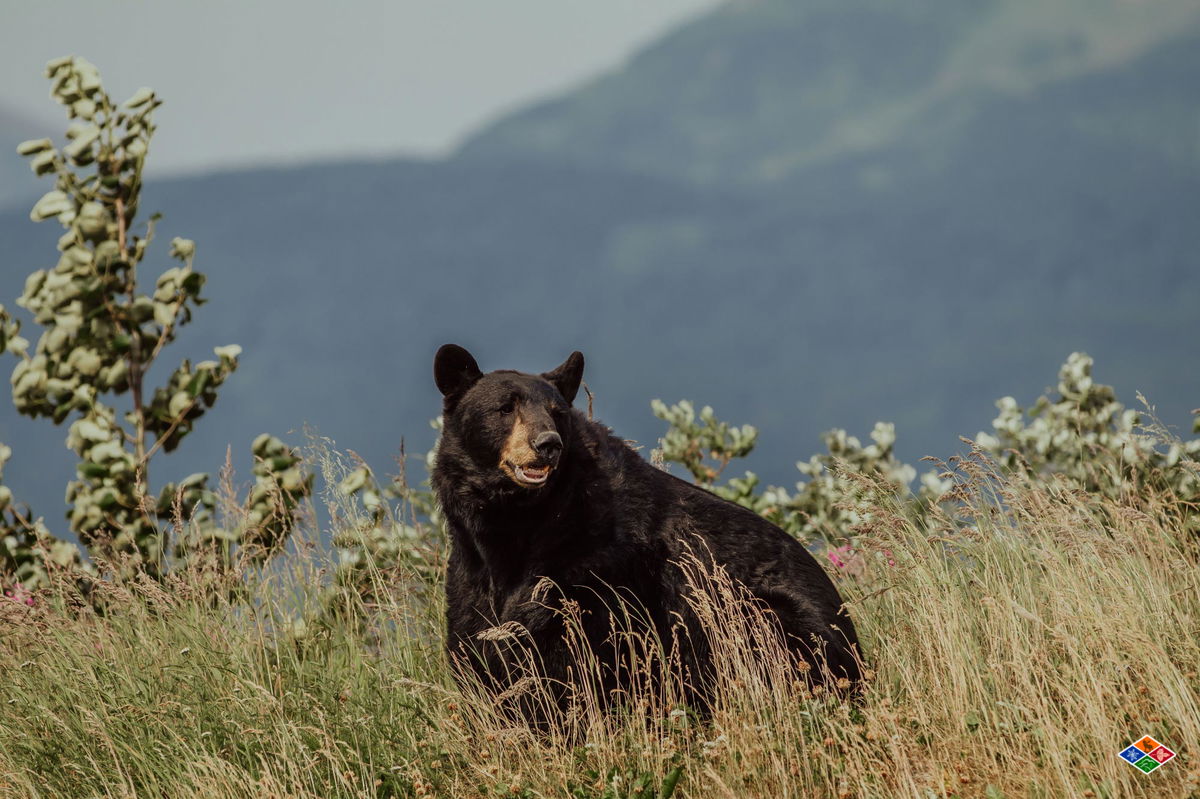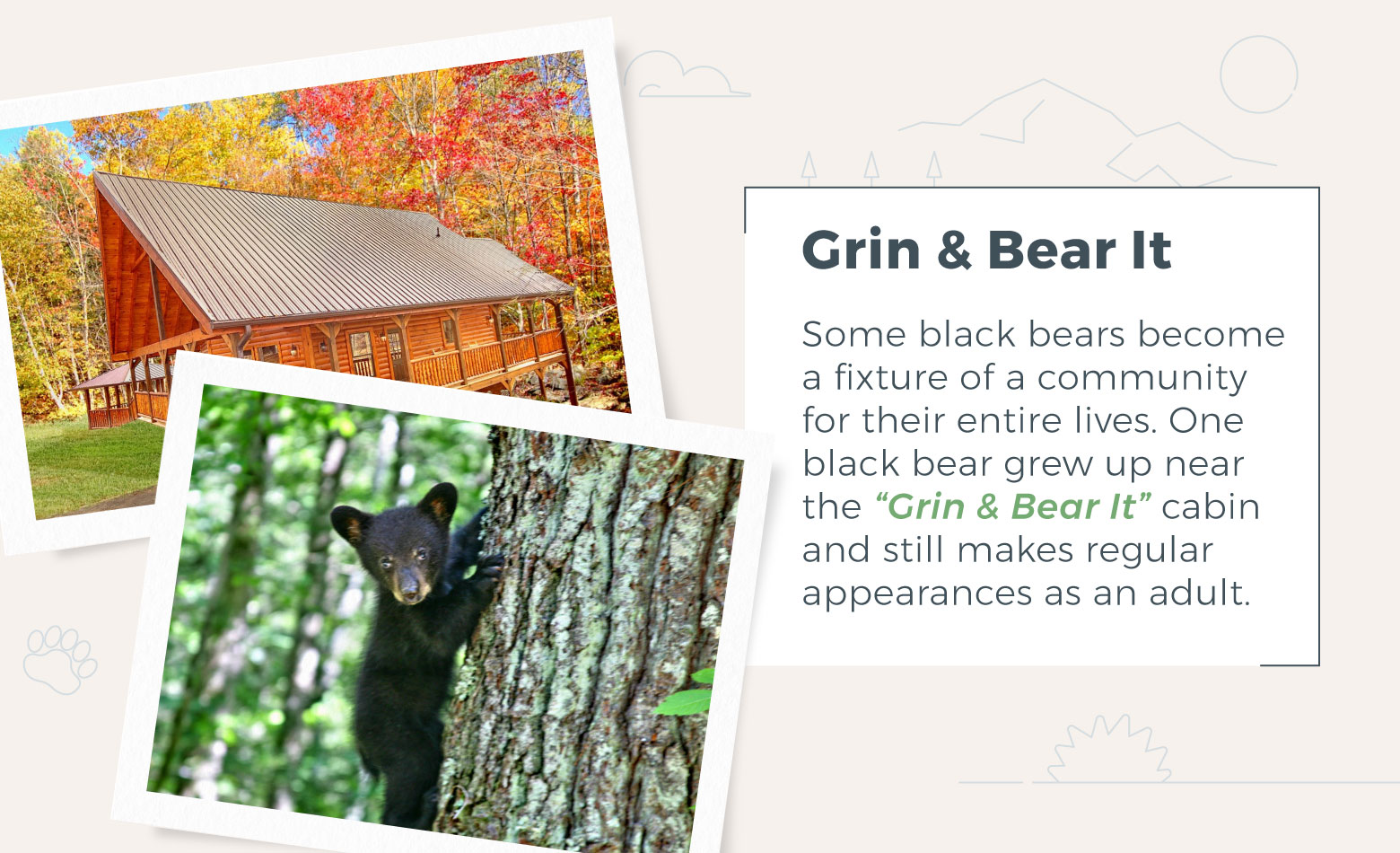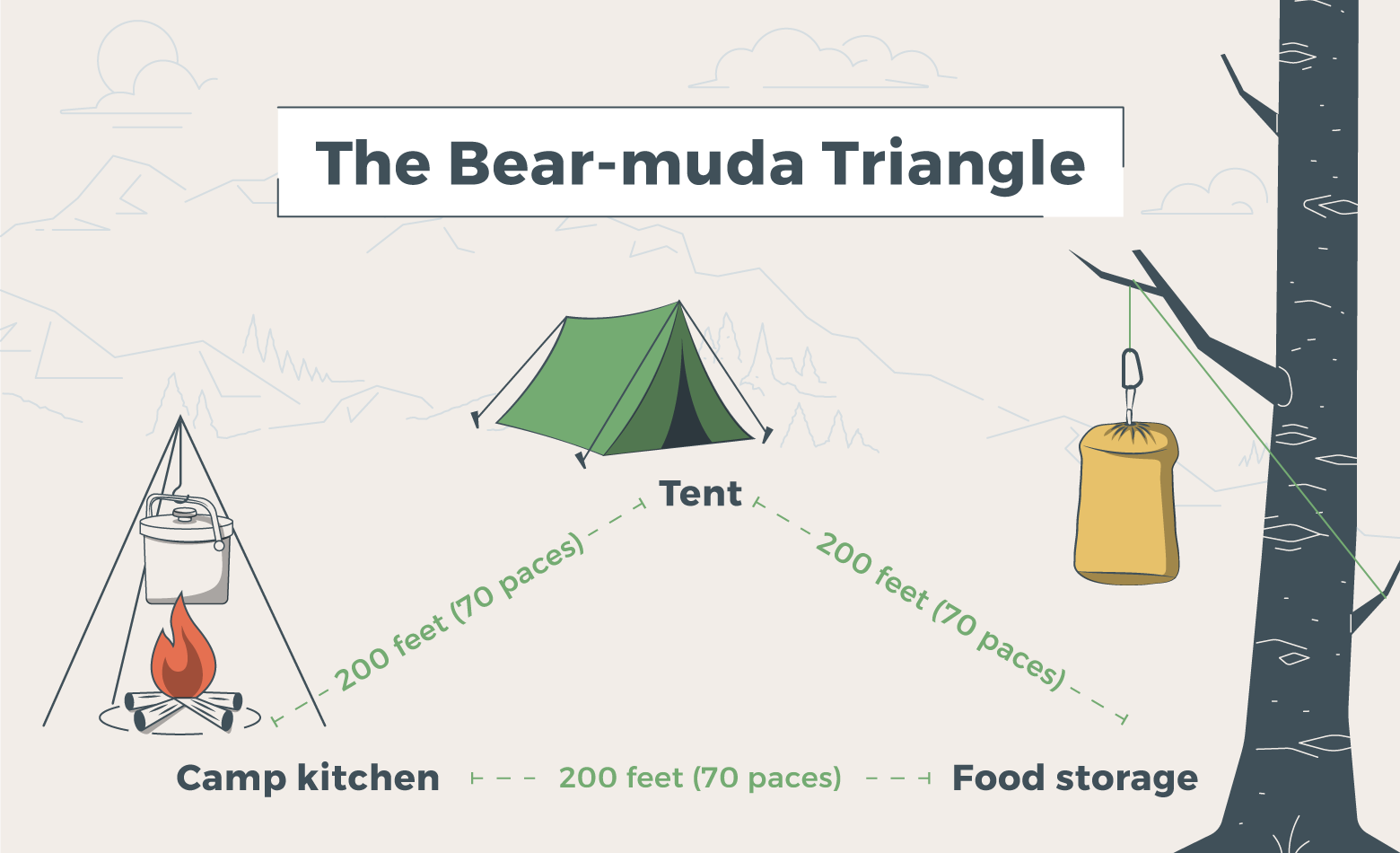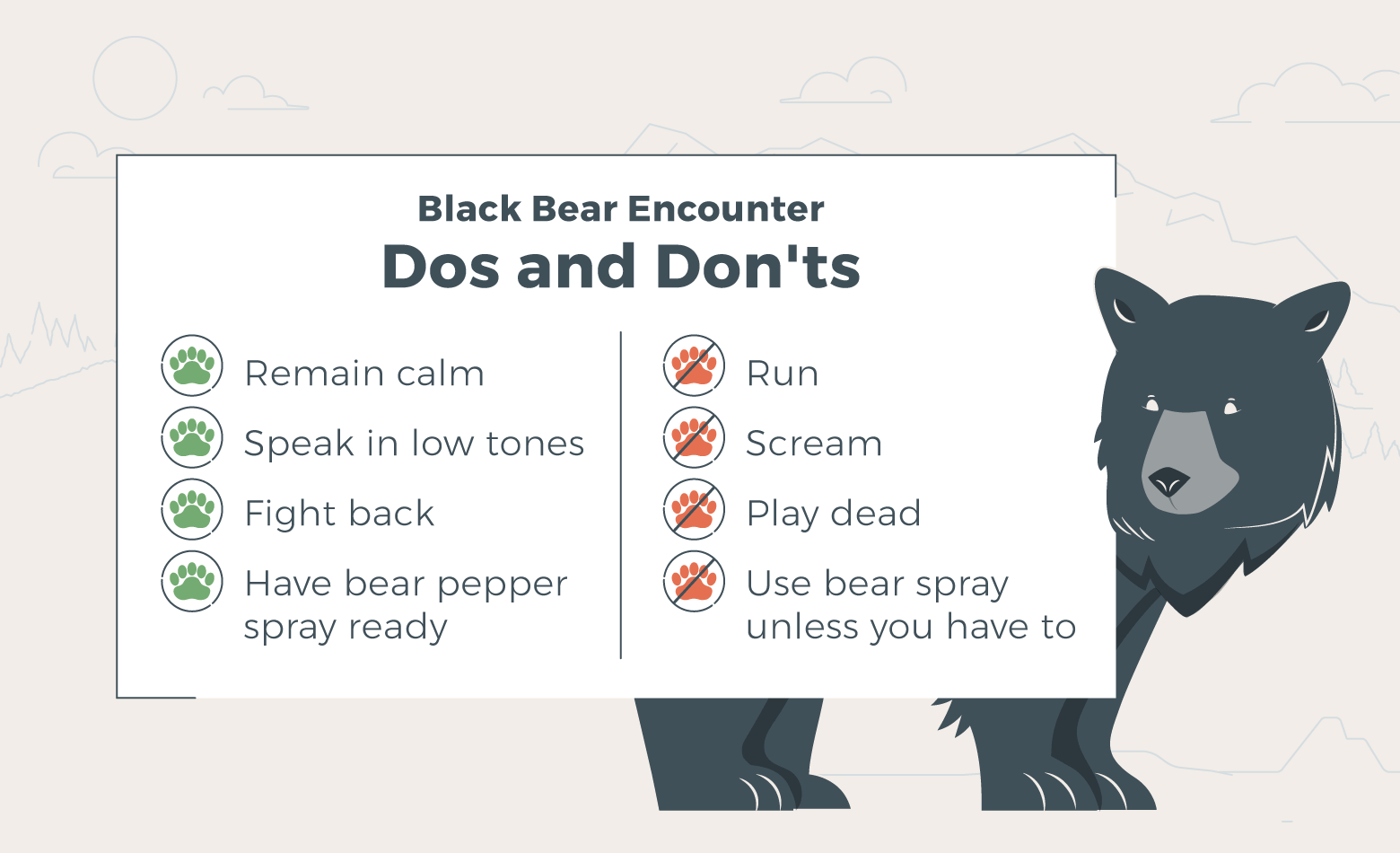
Imagine hiking on a dusty mountain trail, enchanted by the fresh scent of pine and the vivid green popping from the branches of the massive trees. The soil, rocks, and leaves crunch beneath your boots with each step as the forest opens, revealing a surging river — and a majestic black bear standing knee-deep in the rapids, with a fish floundering in its jaws.
Seeing a black bear thriving in nature can be an experience of a lifetime. Our guide takes a close look at these wonderful animals, including 22 incredible black bear facts and common myths and misconceptions. We also explain where you can find them and best practices when traveling in their natural habitat, so you and your furry friends can stay safe in the wild.
Black bears can be found throughout North America, in most Canadian provinces and Alaska, the Pacific Northwest, the West Coast, the Rocky Mountains, Appalachia and the Smoky Mountains, New England, sporadically throughout the Midwest and the southern United States, and northern Mexico.
Click on the states and pins in the map below to see estimated black bear population numbers throughout the United States and national parks.
0
5K
10K
15K
20K
25K
30K
35K
100K
| State | Black Bear Population |
|---|---|
| Alabama | 200 |
| Alaska | 100,000 |
| Arizona | 3,000 |
| Arkansas | 3000 |
| California | 30,000 |
| Colorado | 16,000 |
| Connecticut | 900 |
| Delaware | 0 |
| Florida | 4,000 |
| Georgia | 5,000 |
| Hawaii | 0 |
| Idaho | 25,000 |
| Illinois | 0 |
| Indiana | 0 |
| Iowa | 0 |
| Kansas | 0 |
| Kentucky | 1,000 |
| Louisiana | 850 |
| Maine | 35,000 |
| Maryland | 2,000 |
| Massachusetts | 4,500 |
| Michigan | 17,000 |
| Minnesota | 13,500 |
| Mississippi | 0 |
| Missouri | 1,000 |
| Montana | 15,000 |
| Nebraska | 0 |
| Nevada | 500 |
| New Hampshire | 4,900 |
| New Jersey | 3,000 |
| New Mexico | 5,500 |
| New York | 7,000 |
| North Carolina | 20,000 |
| North Dakota | 0 |
| Ohio | 75 |
| Oklahoma | 2,500 |
| Oregon | 27,500 |
| Pennsylvania | 16,000 |
| Rhode Island | 0 |
| South Carolina | 1,100 |
| South Dakota | 0 |
| Tennessee | 5,750 |
| Texas | 0 |
| Utah | 4,000 |
| Vermont | 5,250 |
| Virginia | 19,000 |
| Washington | 27,500 |
| West Virginia | 13,000 |
| Wisconsin | 24,000 |
| Wyoming | 0 |
* All population numbers are estimates.
Source: Bear.org | National Park Service 1, 2, 3 | USGS | Washington Department of Fish and Wildlife | Yellowstone National Park Bear Report
Approximately 850,000-900,000 black bears live in North America.
Source: Britannica
Black bears are a popular resident in The Great Smoky Mountains National Park with a population of around 1,900 (and growing). The park sprawls across 816 square miles, meaning there are approximately two black bears per square mile.
Source | National Park Service
Black bears populate different landscapes as the weather and food sources change with the seasons.
Source: National Park Service
Black bears settle on “home ranges” that cover 15 to 77 square miles. Home ranges can overlap with many male and female black bears sharing the land. That means black bears are not territorial, unlike other wildlife, such as wolves and mountain lions.
Source: Britannica
Black bears will find or build a den anywhere they feel safe and hidden. Some popular den locations include:
Source: Bearwise.org
Black bears look different depending on the region and are North America's smallest type of bear. But don’t let that fool you — they are still big, especially compared to humans.
Depending on the region, a black bear’s fur can be various colors. Though they’re most commonly black, according to Bear.org, other colors can include:
How big are black bears? Here are their standard measurements:
Source: Wildlife Illinois
Source: BearWise
A black bear’s pale muzzle is a distinct characteristic that sets them apart from other types of bears. Their light snout contrasts with their dark fur making them easy to identify.
Source: Animal Diversity Web
Black bears have a diverse diet that includes plants, fruit, and animals. Here are a few black bear facts about their diets and foraging habits that might be surprising.
Black bears may be commonly portrayed as carnivores, but 85% of their diet consists of plants, berries, and nuts. They also eat fish, honey, insects, human food, garbage, and more.
Source: National Park Service
Black bears may not have thumbs, but when it comes to rummaging for food, they’re smarter than you think. They can open car doors, windows, and cabin doors to snatch up unsecured snacks or garbage.
Black Bear Expert Tip #1
Lock your vehicles and latch bear-resistant garbage bins and dumpsters.
“Please lock your vehicles consistently in Bear Country because they know how to open car doors. This can be dangerous for people and black bears and cause property damage. Remember to always latch bear-resistant garbage bins and dumpsters!
-Janelle Musser, Black Bear Support Biologist, Tennessee Wildlife Resources Agency
Black bears eat an average of 5,000 calories per day. However, as the black bears prepare for the winter, they can consume up to 20,000 calories per day.
Source: Florida Fish and Wildlife Conservation Commission
According to bear.org, black bears are cautious creatures that are driven by food. Here are a few amazing facts about black bear behavior throughout the year.
Black bears like to explore, often investigating smells, noises, or unfamiliar objects in their area.
Source: Bearsmart
Breeding season for black bears takes place throughout June and July, with males and females engaging with several mates to increase the chances of reproduction. Gestation time is between seven and eight months, with mama bears giving birth to their cubs sometime in January or February.
Source: Western Wildlife Outreach
Most black bear cubs are weaned by August and can survive independently. However, cubs often stick with their mama bear, learning how to find food, fattening themselves for the winter months, and sharing the den until the following spring.
Source: Bearwise
When winter hits, black bears retire to their dens but don’t truly hibernate. They enter a state of light sleep called “torpor,” where their metabolism slows, allowing them to survive from their body fat. Unlike hibernation, bears can awaken if they sense danger.
Source: National Park Service
Black bears are expert climbers that can scale a 100-foot tree in 30 seconds.
Source: Bearwise
How fast can black bears run? They’re faster than you think. Black bears can run up to 35 miles per hour. For comparison, the top speed recorded by a human was by Olympian Usain Bolt, reaching 27.78 mph. However, the average human runs at a mere 4-6 mph.
Sources: Bearwise | Britannica | Healthline
Although black bears can swim several miles in freshwater, they mostly wade in shallow areas to catch fish or cool off in the summer.
Source: Bear.org
Black bears display impressive bouts of strength, with a documented case of a 120-pound black bear casually lifting over 300 pounds per claw.
Source: Discover Wildlife
Black bears have a powerful sense of smell, with the ability to pick up a scent from over a mile away.
According to Janelle Musser, “Black bears can smell seven times better than the best-smelling dog. This is why attractants need to be secured in a way that bears cannot physically access the item because they can still smell garbage in a sealed garbage bag or chicken feed inside a shed.”
Source: Bearwise
Black bears can see in color and have great up-close vision. Research shows that they have poor eyesight past 30 yards. They also have an added feature: Black bears have night vision.
Sources: Bearwise | Florida Fish and Wildlife Conservation Commission
Black bears have an acute sense of hearing that’s twice as sensitive as humans.
Source: Florida Fish and Wildlife Conservation Commission
Most black bears live an average of 20 years, but some can live up to 30 years in the wild.
Source: The National Wildlife Federation

Thanks to conservation efforts, black bears were removed from the endangered species list in 2016.
Source: Defenders of Wildlife
There are many myths and misconceptions surrounding the mighty black bear. Put your black bear knowledge to the test and see if you can determine which statements are true or false.
The scent of human blood attracts black bears.
False!
Studies show black bears ignore menstrual odors.
Black bear attacks are uncommon.
True!
The odds of being attacked by a black bear is 1 in 2.7 million.
You should play dead if attacked by a black bear.
False!
Fight back. Black bears will not leave you alone if you play dead.
A mama black bear with her cubs is always dangerous.
False!
They can display harmless bluster if threatened but rarely attack.
Black bears will attack if they sense fear.
False!
Black bears are passive and prefer to retreat unless they're threatened.
Mama bears will reject her cubs if she detects human scent on them.
False!
This is untrue for all animals, not just black bears.
Black bears have a positive impact on the ecosystem.
True!
They spread seeds (via their droppings) and enrich soil through foraging.
A black bear standing on its hind legs is a sign of aggression.
False!
It’s a sign of curiosity — they’re just looking around, listening, and sniffing.
Sources: Animal Diversity Web | BearWise.org | Bear.org | Bear.org | Bear.org | Bear.org | Bearsmart | National Park Service | National Park Service
While spotting a black bear can be exhilarating, always prioritize your safety first. Following basic guidelines can help you and black bears coexist safely in the wilderness, making an amazing experience even better.

Pick a well-traveled route designated by the national park. Many parks have information about which trails have frequent black bear activity, while some can even provide alerts and real-time updates.
Avoid hiking at dawn, dusk, or night and give yourself enough time to return to your campsite before nightfall. Black bears are most active during these times, hunting and foraging.
Source: National Park Service
Carry bear spray and make it easily accessible, not buried in your backpack (more on that later). If you bring food, keep it in a bear-resistant bag to mask the smell. National parks don’t allow you to carry guns, but you can bring knives that can be used as a last resort.
Source: National Park Service
Black bears tend to avoid groups of people. Never travel alone, and always bring at least one other travel partner. Preferably, travel in groups of four or more to increase your chances of deterring black bears.
Source: National Park Service
You never want to surprise a bear, so making enough noise while hiking alerts black bears of your presence so they know to stay away. Talk loudly and clap periodically, but do not whistle or scream. That may sound like a wounded animal to a black bear, causing it to investigate your area.
Source: National Park Service
Black bears can hide in tall or thick vegetation. Staying on designated trails helps you from becoming lost or wandering into an area where you can surprise a black bear.
Source: National Park Service
Watch for signs that black bears have been in the area, like bear tracks, scat (droppings), and tree markings, like scratches. Listen for bear sounds, like huffing, jaw-popping, or low growls — a signal that you must leave the area. Also, be careful near fruit-bearing trees or bushes and near water sources, as black bears frequent these places for nourishment.
Source: National Park Service

The Bear-muda Triangle refers to properly setting up your campsite to minimize bear interactions. Your tent, kitchen, and food storage should be positioned in a triangle, putting 200 feet of distance (or 70 paces) between each station. That way, if a bear smells food and wanders into your campsite, the kitchen and food storage areas are safely away from your tent.
Source: The Trek
Never leave food unattended, and keep it in a safe place. Store or dispose of food in bear-resistant containers that mask the smell and are difficult to access, like metal bear boxes, bags, or canisters.
You can also hang food from a tree at least 10 feet from the ground and 100 yards from your tent. That doesn’t guarantee it's protected, but it makes it more challenging for the bear. Always check with your park to confirm their rules and regulations surrounding food storage and disposal, as they may differ from park to park.
Sources: USDA Forest Service (1) | USDA Forest Service (2)
Black Bear Expert Tip #2
Keep garbage secure and away from black bears
“Unfortunately, a few times in my career I’ve had to deal with a bear cub with a jar or container stuck on its head. This occurs when bears have access to garbage and oftentimes these cubs can’t see out of the container and they cannot set off most traps.
In a recent case in Tennessee, a cub was abandoned by its mother which made capturing it even more difficult. The cub survived at least 10 days with a snack jug on its head in the middle of a heat wave! Thankfully TWRA was able to capture the cub and remove the jar.”
-Janelle Musser, Black Bear Support Biologist, Tennessee Wildlife Resources Agency
Respect the bear’s space and never approach them. If you want a closer look, do so with binoculars or a spotting scope. If you spot a black bear and it changes its behavior — i.e., it stops eating, begins watching you, or changes its direction — that means you are too close and could result in aggressive behavior from the bear. If a black bear approaches you, back away slowly, maintaining a safe distance.
National parks often have requirements detailing how close you can get to a bear.
Source: National Park Service
The Great Smoky Mountains National Park makes it illegal to willfully approach a black bear within 150 feet.
Source: National Park Service
Even if you think the cub may be sick, wounded, or lost, do not try to help it alone. Although there is no record of humans being killed by a mother protecting her cubs, black bears are still wild animals with extreme strength and speed. Instead, contact park authorities to report it once you are safely away from the area.
Black Bear Expert Tip #3
Never approach or get close to black bears.
“Black bears will defend themselves and their cubs. A good thing about black bears is that they give lots of warning signs that people are too close, such as jaw popping and huffing and even bluff charging.”
-Janelle Musser, Black Bear Support Biologist, Tennessee Wildlife Resources Agency
Though it may be tempting, do not feed the bears. There are multiple reasons why:
Source: National Park Service
Black Bear Expert Tip #4
A fed bear is a dead bear.
“This means if a bear is rewarded with food from people—purposefully or through garbage—then that bear becomes dangerous. It has to be euthanized or it can have long-term health issues. Please do your part and pay it forward for bears and future visitors in bear country by securing attractants!”
-Janelle Musser, Black Bear Support Biologist, Tennessee Wildlife Resources Agency
Although black bear attacks are uncommon, they can be unpredictable — especially if they are surprised by your presence or feel that you’re a threat. These dos and don’ts can provide an action plan if you find yourself in a hairy situation.

Remain calm: Black bears usually just want to be left alone and will not attack unless they feel threatened.
Do not run: Running may make the bear think you’re prey. Plus, they can easily outrun you.
Speak loudly in low tones: This lets the bear know you’re a human and not prey.
Access your bear spray: Be ready to use the bear pepper spray as a last resort. It can repel an attacking bear, but the ingredients can also affect your own sight and breathing, especially if the wind is blowing in your direction.
Fight back: Playing dead will not work against an attacking black bear. Instead, fight back, aiming punches at vulnerable areas, like its eyes and nose.
Sources: Animal Diversity | Treehugger | Treehugger | Treehugger
Supporting conservation efforts for black bears can help them continue to prosper and stay off the endangered species list. There are several ways to contribute, but here are a few places to get started:
National parks make it easy for people to see black bears while connecting with Mother Nature. Because of the resources, rules, regulations, safety precautions, and conservation efforts, these five national parks can help make your black bear experience exceptional.
Located in the heart of Appalachia, The Great Smoky Mountains National Park provides the perfect environment for humans to spot black bears doing black bear things. Black bears are the most active during the summer, making it the best time to visit the Smoky Mountains.
The Smokies feature a high black bear population density of approximately two bears per square mile, making your odds of seeing one very high.
A few notable places to see black bears in the Smokies include:
It’s no wonder Hanna-Barbera used Yellowstone as inspiration for Jellystone National Park in the popular ‘60s cartoon, The Yogi Bear Show. Travelers from around the world visit Yellowstone National Park to see the wildlife and experience its unique natural wonders, including the world’s most famous geyser, Old Faithful.
Yellowstone is home to both black bears and grizzlies, with the black bear population estimated at around 600. These spots in the park are hotbeds for black bear activity:
Nearly the size of Rhode Island, 95% of Yosemite National Park is classified as wilderness. Visitors are attracted to the waterfalls, hiking trails, rock formations, and Giant Sequoia trees that are thousands of years old.
There are approximately 500 bears in the park, which doesn’t seem like a lot considering the size of the park. However, black bears frequent a few areas in the park, including:
Glacier National Park contains more than 700 miles of hiking trails, meadows, forests, lakes, waterfalls, and, of course, glaciers. These glaciers helped create the unique landscape, attracting visitors with its natural, untouched beauty and incredible wildlife.
Here are three picks within the park to see black bears in the wild:
The Pacific Northwest boasts a dense population of black bears and three national parks — including Mount Rainier National Park — that provide a natural environment for them to flourish. Known for (and named after) its active volcano, Mount Rainier, the park also consists of wetlands, glaciers, and forest terrain.
Try these locations within Mount Rainier National Park to spot cinnamon-colored black bears:
Elk Springs Resort can elevate your experience of seeing black bears in Gatlinburg and make planning your trip to the Smoky Mountains a breeze. They’ve partnered with several local experts and businesses to create the ultimate Gatlinburg travel guide, so you can access all the best sights, activities, adventures, and more in one place.
Whether you’re looking for a relaxing, rustic experience immersed in nature, an exhilarating trip packed with attractions — or a mix of both — our cabin rentals in Gatlinburg, TN can help you create the getaway of a lifetime.